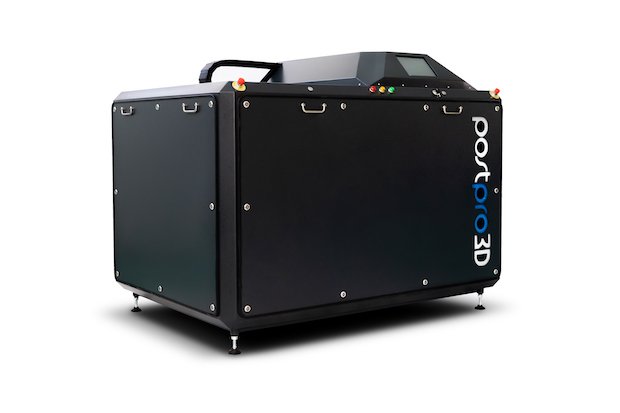Additive Manufacturing Technologies (AMT), an award-winning UK-based post-processing systems manufacturer, will unveil two new machines at RAPID + TCT 2019 in Detroit, Michigan, next month.
On May 20-23rd, the PostPro3DColor and PostPro3DMini will be showcased with the company’s PostPro3D system which was launched late last year. This machine is designed to smooth thermoplastic 3D printed parts equal to those produced using injection molding. Joseph Crabtree, CEO at AMT, said:
“We are excited to be exhibiting and presenting for the first time at RAPID in Detroit next month. “We’re scaling up production both domestically in the U.S. and globally and we are eager to share the progress we have made with our post-processing solutions.”

BLAST post-processing technology
With four years of experience in the 3D printing industry, AMT has developed technology to address the cost and time restrictions within post-processing. The company’s hardware is operated using its proprietary Boundary Layer Automated Smoothing Technology (BLAST).
According to AMT, BLAST is a physio-chemical performance- and aesthetic-enhancing process that smooths a variety of thermoplastic 3D printed parts with complex internal cavities. The method is said to be well-controlled for reproducible results, eliminating degradation of the part’s mechanical properties.
“Our BLAST process seals the surface of the parts being processed removing porosity and thus sealing them against liquid or gas ingress,” added Crabtree. “Our PostPro3D systems make part surface finishing cost and speed competitive for high volume production and have been fully tested on products across a wide range of industry sectors including automotive, aerospace, sports, and footwear.”

The PostPro3DColor and PostPro3DMini
The PostPro3DColor, one of the two new systems, offers the same functions of the PostPro3D whilst adding color to the 3D printed parts in a single step without the use of water. According to AMT, this is the only commercially available post-processing equipment of its kind.
Similarly, the PostPro3DMini provides the advantages of the PostPro3D machine in a smaller unit. This is aimed toward STEM programs and design studios. Crabtree continued, “Parts processed in the PostPro3D machines do not show a cytotoxic effect in accordance with ISO 10993-5, ISO 10993-1, and ISO 10993-12 which means they can be certified for medical use.”
Currently, AMT is collaborating with numerous OEMs including Japanese electronics manufacturer Mitsubishi Electric, vendors, and material suppliers to optimize post-processing. Those headed to RAPID + TCT can visit AMT at booth 656.
The PostPro3D system. Photo via AMT.Vote for the 2019 3D Printing Industry Awards.
For live coverage of RAPID + TCT, subscribe to our 3D printing newsletter and follow us Facebook and Twitter.
Visit our 3D Printing Jobs board to find out more about opportunities in additive manufacturing.
Featured image shows 3D printed parts made with an EOS PA2200, post-processed using the PostPro3D system. Image via AMT.



